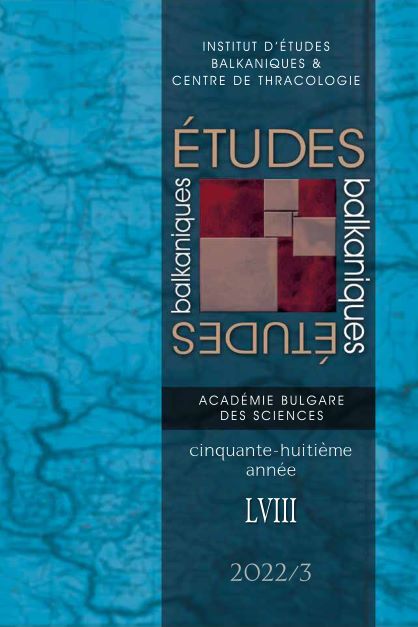ZIMMIS (NON-MUSLIMS) OF RUSÇUK AND THEIR NEIGHBOURHOODS IN THE RIDDLE OF A MID-18th-CENTURY. DETAILED AVARIZ TAX REGISTER AND BEYOND
ZIMMIS (NON-MUSLIMS) OF RUSÇUK AND THEIR NEIGHBOURHOODS IN THE RIDDLE OF A MID-18th-CENTURY. DETAILED AVARIZ TAX REGISTER AND BEYOND
Author(s): Mariya ShusharovaSubject(s): History, Social Sciences, Sociology, Ethnohistory, Local History / Microhistory, Social history, Special Historiographies:, Demography and human biology, The Ottoman Empire, Ethnic Minorities Studies
Published by: Институт за балканистика с Център по тракология - Българска академия на науките
Keywords: Ottoman Balkans; Rusçuk/ Ruse; zimmis (the non-Muslim subjects of a Muslim state); mahalle; tapu tahrir; cizye; avariz; tevzi registers; sicils; çiftliks; marginalia;
Summary/Abstract: The aim of this paper is to cast more light on the spatial and demographic development of the mid-18th century town of Rusçuk (mod. Ruse) – a center of an Ottoman district (kaza) on the Lower Danube. The basic source for the study is a rare mid-18th century detailed avariz register. However, this “ready overall account” of the local population posed two general problems: 1) the acute confessional disproportions, with the extremely low numbers of the local non-Muslim communities (comprising about 10 % of the town’s population); 2) the ‘flexibility’ of the Christian neighbourhoods. This predetermined the particular focus on the zimmis (non-Muslims) as the first part of the study elaborates the demographic dynamics, town neighbourhoods network formation, religious institutions, local parish and monasteries networks in a long term perspective (16th – 18th centuries) examining different types of state tax-registers (tapu tahrir, avariz, detailed post-1690’ cizye registrations). Beside the registers, the collection of the kadı court records (sicils) of the local sharia judges of Rusçuk are particularly valuable source approached here for a more thorough interpretation of the level of inclusiveness of the mid-18th-century macro-framework and of outlining some of its major “demographic” gaps. The sicils spotlight the relevant processes and contextualize the application of the taxation policy in situ, tracing both continuity and serious transformations of the town tissue. The shifts were more tangible in the mahalles of the non-Muslim as well as in the process of the town askeri çiftliks’ proliferation. The latter in particular spotted one of the major demographic “gaps” of the mid-18th-century register as it generally surveyed the dwellers of the town neighbourhoods omitting the reaya of the town askeri çiftliks (mostly Christians). Thus, this study points at the robust functioning of the local Christian institutions within the framework of much more optimistic demographic parameters of the community than those attested in the mid-18th century avariz register proper.Another micro-focus of the study is the family story of the only priest registered in the town in this mid-18th-century avariz defter – here corroborating the information from the marginal notes left by his ancestors, and thus presenting a more vivid image of those who guided the parishioners in the 18th-century Rusçuk.
Journal: Études balkaniques
- Issue Year: 2022
- Issue No: 3
- Page Range: 417-500
- Page Count: 84
- Language: English
- Content File-PDF

